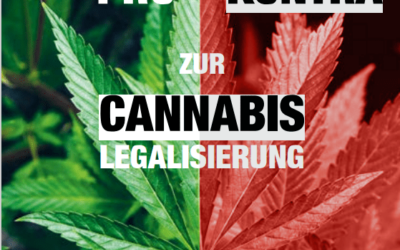Verein
SAG NEIN ZU DROGEN – SAG JA ZUM LEBEN
Der Verein Sag Nein zu Drogen – Ja zum Leben ist seit 1990 im Bereich der Drogenprävention aktiv.
Er veröffentlicht regelmäßig Informationshefte und audiovisuelles Material, um junge Menschen über die Risiken und Folgen des Drogenkonsums zu informieren und zu sensibilisieren.
Seit 2007 verteilt der Verein unter anderem die Informationshefte der FOUNDATION FOR A DRUG-FREE WORLD.
Unsere Videos
Entdecken Sie unsere dreizehn Informationsvideos über die Auswirkungen von Drogen.
Informationshefte
Lernen Sie die Fakten über Drogen kennen mit Hilfe unserer Informationshefte “Die Fakten über Drogen”
Uns unterstützen
Ihre Spenden ermöglichen es uns, die für unser Handeln notwendigen Materialien herzustellen und groß angelegte Präventionskampagnen zu finanzieren.
Entdecken Sie unsere Videos.
FINDEN SIE MEHR HERAUS
WODKA – TEQUILA – SCOTCH: ALKOHOL
Neueste Nachrichten
Verteilaktion am Hauptbahnhof Zürich
Am Samstag 29. Jan. hatten wir die erste Verteilaktion in diesem Jahr. 1'000 Booklets wurden am Zürcher HB verteilt. Wir hatten auch einige gute Reaktionen. ein junger Mann erzählte wie er erkannt hatte, dass heutzutage viele Leute gar nichts mehr ertragen konnten,...
Pressemitteilung – Vorbeugen ist besser als heilen
Die meisten Drogenabhängigen sagen, dass sie, wenn sie die Folgen ihres Konsums gewusst hätten, nie mit dem Drogenkonsum begonnen hätten. Vor diesem Hintergrund startet der Verein Say No to Drugs – Yes to Life in Genf eine Informationskampagne. Es startete diese Woche und läuft erstmals seit zwei Wochen.
Broschüre – Pro+Kontra Cannabis Legalisierung
Eine ausgezeichnete, kompakte Broschüre, welche anhand vieler Studien, Überprüfung der Resultate und sonstigen Ergebnissen Fakten liefert, wie sich eine Cannabis-Legalisierung auswirkt.
Informationsstand am Hirschenplatz
Hallo liebe Freunde Wir hatten heute Samstag, 9. Okt. 21 den letzten Info-Stand des Jahres am Hirschenplatz, in der Altstadt Zürich. Wir verteilten über 445 Booklets an Passanten, hatten gute positive Feedbacks und einige Reaktionen und ein paar gute Gespräche. - ein...
Info-Stand an der Bahnhofstrasse Zürich
Am Samstag 18. Sep. hatten wir einen Info-Stand an der Bahnhofstrasse. Das schöne Wetter, aufgestellte Passanten und afrikanische Musiker haben zu einer erfolgreichen Aktion beigetragen. Aber ohne unsere fleissige Helfer wäre es natürlich nicht möglich gewesen. Daher...
Visits: 267





